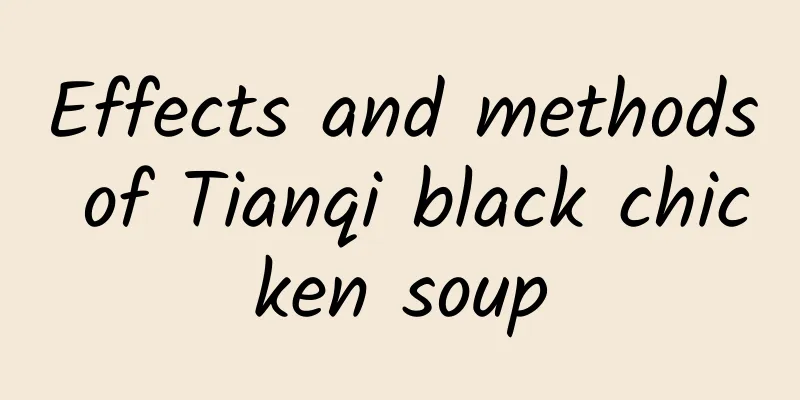The efficacy and function of mountain chrysanthemum

|
I believe many people are familiar with the Chinese medicinal material Shanbaichong. As a common Chinese medicinal material, Shanbaichong is rich in nutrients. Let us learn about it in detail. [Other names] Wild white chrysanthemum (Illustrated Catalogue of Plant Names and Realities), small snowflake, white cohosh (Guizhou Folk Medicines), mountain amaranth, three-veined amaranth, digestive flower, evergreen, white flowered groundsel, August frost, August white, white amaranth (Zhejiang Folk Commonly Used Herbs). [Source] It is the whole herb with roots of the plant Lagerstroemia indica of the Asteraceae family. Harvested in summer and autumn, used fresh or sun-dried. [Original form] Perennial herb, 30 to 90 cm tall. Stems erect, base smooth or hairy. The leaves are alternate, ovate to ovate-elliptical, 2.5-10 cm long, 1-2.5 cm wide, obtuse at the apex, narrow at the base, sparsely serrated at the margin, rough and hairy on both sides, with 3 obvious veins. The inflorescence is terminal and arranged in a umbel shape; the involucre is semicircular, with 2 to 3 rows of bracts and thin edges; the ligulate flowers are white, and the tubular flowers are yellow. Achenes are flat, with abundant pappus, rusty or dark white. Flowering period is autumn. [Habitat distribution] Growing on roadsides, ditches and in grass in the wilderness. It is distributed in most parts of our country. [Chemical composition] Contains flavonoids, saponins, as well as sugars, esters, tannins, proteins, amino acids, chlorophyll, etc. The roots mainly contain saponins (mainly steroidal saponins) but no flavonoids; the above-ground parts (stems and leaves) mainly contain flavonoids but no saponins. Saponins have better expectorant effect, and flavonoids have better antitussive effect, so the whole plant with roots is generally used as medicine. 【Nature and flavor】 Bitter, pungent, cool. 【Functions and indications】 Soothe wind, clear heat, detoxify, eliminate phlegm and relieve cough. Treat wind-heat cold, tonsillitis, bronchitis, furuncle, snake bites, and bee stings. [Usage and Dosage] For oral use: decoct in water, 0.5-2 liang; or mash into juice and drink. For external use: mash and apply. [Additional prescription] ① For treating bronchitis and tonsillitis: one liang of mountain white chrysanthemum. Decoction in water. [Clinical Application] Treatment of chronic bronchitis in the elderly: use 3 liang of fresh whole herb (2 liang of dried herb) daily, decoct in water for 4 hours, concentrate, filter, and take in 2 doses; or make tablets with the whole herb, take 3 times a day, 5 tablets each time (the daily amount is equivalent to 2 liang of raw herb); or make into granules, take 2 times a day, 25 grams each time. One course of treatment is 10 days, and 2 to 3 courses should be taken in a row. Efficacy: According to the analysis of 581 cases treated with two courses of decoction, 72 cases (accounting for 12.4%) were controlled in the short term, and 105 cases (accounting for 18.1%) were significantly effective; according to the analysis of 337 cases treated with three courses, 38 cases (accounting for 11.3%) were controlled in the short term, and 96 cases (accounting for 28.2%) were significantly effective; according to the analysis of 20 cases treated with tablets, 9 cases were controlled in the short term, and 7 cases were significantly effective; according to the analysis of 119 cases treated with granules, 7 cases (5.9%) were controlled in the short term, and 17 cases (14.3%) were significantly effective. Among them, the simple type is more effective than the asthma type; the anti-inflammatory and anti-asthmatic effects are not as good as the antitussive and expectorant effects. Most patients begin to see results within 1 to 5 days after taking the medicine, with relief of cough, reduced sputum volume, sputum color changing from yellow to white, easier breathing, and total white blood cell count and neutrophil count returning to normal. Side effects: Generally within 1 to 2 days after taking the medicine, a small number of patients may experience dizziness, headache, nausea, vomiting, stomach discomfort, or occasionally dry throat, irritability, abdominal distension, diarrhea, bloody stools, frequent urination, urticaria and other reactions. There is no need to stop the medication, and these reactions will disappear on their own within 3 to 5 days. No damage was observed to the heart, liver, kidney and hematopoietic system during medication. In addition, this product has been used clinically with Buddaria japonica, or with ginkgo leaves and orchid grass to make compound tablets for the treatment of chronic bronchitis, but its efficacy is no significantly different from that of single-ingredient Amaranthus triveifolia. 【Excerpt】 《*Dictionary》 【Source】 From "Guizhou Folk Medicine" The above is a detailed introduction to the medicinal value of chrysanthemum. There are also some ways and methods when eating chrysanthemum. The above methods of eating are very helpful for regulating various problems of the human body, so you can do it with confidence. |
<<: The efficacy and function of licorice root
>>: The efficacy and function of Shamu noodles
Recommend
This "metropolis" in the heyday of the Tang Dynasty had a population of over one million! How did it reappear in the world a thousand years later?
On December 11, 1961, the ruins of a metropolis w...
The efficacy and function of sesame[picture]
The world is full of wonders, and Chinese medicin...
What are the effects of American ginseng and wolfberry tea formula
American ginseng is one of the most common nouris...
Why are baked sweet potatoes more delicious? Which sweet potato is the best in the baked sweet potato world?
If there is anything that can soothe the hearts o...
Today’s College Entrance Examination丨The “fruits” are ahead, pick them bravely!
Today is the first day of the national college en...
The efficacy and function of the root of green cotton vine
Most Chinese medicinal materials have good effect...
Ancient DNA finds answers to the mystery of cattle’s origin and domestication from prehistoric traces (Part 1)
Produced by: Science Popularization China Author:...
The efficacy and function of banyan leaves
The Chinese medicinal material Banyan leaf is a v...
What is Kunming?
All along Kunming They are all well-known "S...
A 7.1-magnitude earthquake hit Xinjiang late at night! How to avoid risks and save yourself and prevent aftershocks scientifically?
The China Earthquake Networks Center officially d...
The efficacy and function of skink
There are many kinds of common Chinese medicinal ...
State Post Bureau: China's express delivery business volume will exceed 100 billion pieces in 2022
At 8:10 a.m. on December 1, real-time monitoring ...
How to make Polygonum multiflorum
Most people in middle age will have gray hair. At...
The efficacy and function of wine Chuanxiong
In modern life, everyone is very familiar with va...
Is it more useful to say sweet words to the left ear?
This article was reviewed by Zhao Wei, MD, associ...





![The efficacy and function of mountain cherry [picture]](/upload/images/67ca092919535.webp)

![[One Belt, One Road Story] The "pioneers" heading towards the sun](/upload/images/67f0a91f384ed.webp)

